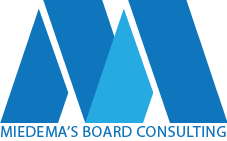I’ve just finished a book that was given to me by an unlikely board governance source. An elementary school principal and I were comparing notes on group dynamics and the way people think and he recommended I read Mindset by Carol Dweck. It was a treasure trove of insights into how thinking develops and the effect it can have in board governance settings.
The premise is that there are two basic mindsets – fixed and growth. The fixed mindset has us putting people into black and white groups – smart or dumb, good or bad, strong or weak, etc. It comes from a belief that intelligence is static and unchangeable so when we think in this mindset we avoid challenges, get defensive, see effort as fruitless and ignore negative feedback. Managers that have fixed mindset tendencies can have difficulty admitting and correcting their deficiencies. The need to be seen as the most talented or the best in class is so great that if it is threatened it can result in lies to protect that image such as we saw with Enron.
The growth mindset is definitely portrayed as the more desirable of the two. A growth mindset does not get discouraged if the first attempt fails. It understands that the process of learning and growing is hard work. A growth mindset enjoys the process of learning and trying and can accept that the end result might not be that you are the best or the brightest. The attitude is that you will be better or brighter than if you did not try at all. Leaders that have shown a growth mindset in action are Jack Welch at GE and Lou Gerstner at IBM.
Dweck’s theory is that these mindsets are taught to us at a very young age through the type of praise children receive, hence my friend’s interest in the book from an educator’s perspective. Praise of talent and ability leads to a fixed mindset and praise of effort and learning leads to a growth mindset. It sounds simplistic but Dweck makes a compelling case.
There are many applications for board governance. Being able to identify fixed mindset thinking can be very useful around a boardroom table. If a board does not want to hear bad news or accept that their organization is no longer the best in their field, a fixed mindset might be setting in. Perhaps the boards of Encyclopedia Britannica or Blockbuster could have employed growth mindset thinking to lead their organizations to becoming Wikipedia or Netflicks. Groupthink is another risk of a fixed mindset. When someone who is seen to be a leader or an expert in a certain field sways the discussion without the board considering contrary views or alternatives, risky decisions can be made. Boards can also watch for a fixed mindset in their CEO through their management style and its effect on the culture of the workplace. The financial results might sometimes appear to justify a heavy handed style but the reward system could be working against staff who think and learn and who can grow the organization in the long term.
As Dweck points out, most people do not have exclusively one mindset or the other. It can change depending on the context and mindsets can be deeply embedded and complicated. The good news is that a fixed mindset can be trained to think in a growth mindset, largely just from being aware of the signs of fixed mindset thinking and learning how to think in a growth mindset. Leaders can also retrain their staff through what they reinforce and reward in the workplace. Lots to “think” about we move into a new year!







